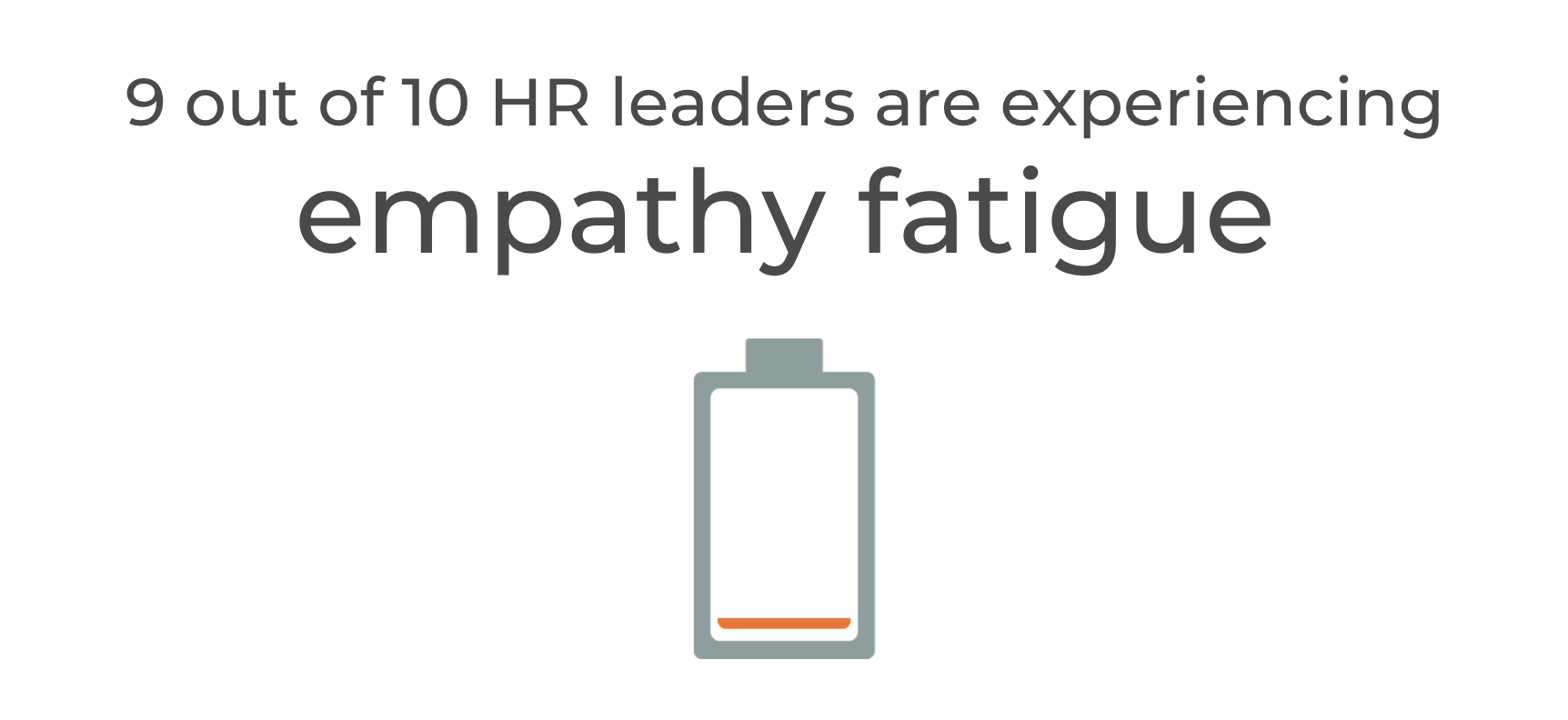Everything You Really Need To Know About Employee Engagement
 Oh, those ridiculous terms people like to throw around. Satisfaction. Happiness. Turnover. Vacation time. What does it all mean?
Oh, those ridiculous terms people like to throw around. Satisfaction. Happiness. Turnover. Vacation time. What does it all mean?
You used to hear them back when you were a fledgling whatever-you-are. They got thrown around a lot. They always felt, well, disingenuous. Buzzwords used to make new employees feel welcomes, like the company really, and truly cared about them. But with enough time, you realized a hard truth: you were just a cog in a very mighty machine — a machine you entirely disagreed with. It wasn’t the kind of company you wanted to work for.
Now, it’s not the kind of company you want to run.
There’s one particular Human Resources term that explains a whole lot about why you’ve felt this way in the past and why your staff might be feeling it now. It’s “employee engagement.”
Do you really know what this term means, how it affects your organization, what factors contribute to it, and how to improve it? Let’s get you up to speed so you can learn why it really matters, and how you can effectively build it up in your organization.
WHY IT MATTERS
What is employee engagement, exactly?
There have been loads of definitions over the years, starting with one from William Kahn, who kicked things off in 1990 by describing it as "the harnessing of organization members’ selves to their work roles; in engagement, people employ and express themselves physically, cognitively, and emotionally during role performances.” But all the descriptions add up to the same basic idea.
This much-used term is essentially the net sum of an employee’s commitment to and interest in a particular job and the organization he or she works for based on a variety of factors. It’s the very real measurement of how strongly a person feels about the intangible things a job has to offer — the things beyond salary and health insurance, such as the sense of purpose he feels, and the intrinsic rewards she gets from doing the work.
Of course, there’s more to it than that, and there’s a mighty good reason we’re talking about it — one that could have a significant impact on your organization’s future.
Extrapolating the takeaways from a variety of studies, employee engagement can be a significant indicator of a company’s success, now and in the future. Simply put, companies with engaged employees do better than those whose employees have that icky, pervasive “checked out” feeling you might have seen around an office or two during your career.
Let’s put some numbers to the situation.
- According to CLC Genesee, the average company — not accounting for employee engagement — experiences 8.9% revenue growth over a period of three years. Companies with more engaged employees, on the other hand, see a 20.1% increase. When CLC Genesee looked at the causes behind this, it found that engaged employees are also 87% less likely to leave an organization.
- Backing this up, Gallup Research found that 59% of engaged employees say their job brings out their most creative ideas. When disengaged employees are asked the same questions, those warm and fuzzy feeling drops all the way down to just 3%.
- Finally, according toInfosys BPM Consulting, an increase in engagement of just 5% can lead to 1.5% decreases in attrition. Disengaged employees don’t stick around.
Organizations with more engaged employees have less attrition, a more motivated workforce, and yield higher profits. You shouldn’t need more reason than that to make it a priority.
THE DRIVERS OF EMPLOYEE ENGAGEMENT

Of course, you can’t just say you care about having engaged employees and call it a day. To get all these great results, it’s crucial to understand what factors will contribute to your new and improved, more engaged workforce.
According to Ivey Business Journal, after Sears Roebuck & Co. implemented a system of employee engagement measurements known as Total Performance Indicators back in 1992, they came to the following three conclusions:
-
An employee's understanding of how her work impacts a business’s core objectives has a positive impact on her job performance.
-
An employee’s attitude towards the job and the company itself is the strongest indicator of an employee’s loyalty and overall customer service.
-
When you improve an employee’s attitude about her job, and consequently her job performance, you increase customer satisfaction and revenue growth.
Is it really startling that how an employee feels about her role and her impact on business performance affects the bottom line? Nah. This is some pretty obvious causality.
So what, specifically, contributes to these feelings? What are the details that make a person want to check in and get cranking? Here are some of the thought bubbles you can find hovering over the heads of your happier staff members.
- “What I do matters.” An employee’s perception of the importance of his position has a major impact — more than all others combined — on how engaged he feels in his job. Simply drawing a line from the staffer’s work to the effects of that work can do wonders for boosting that staffer’s sense of purpose.
- “I have room to grow.” Generally speaking, people want to improve within their roles, and even move into new ones. Stifle that and people will look elsewhere.
- “I agree with the organization’s beliefs.” It’s hard to work for a company which does things counter to your own value system. That much is obvious. But well beyond the facts, perception matters here; if they don’t believe it, it’s not true. Consider making a discussion of these principles part of the interview process. Better to weed out the misaligned now.
- “Generally, we communicate well.” Effective internal communication is one of the great and constant challenges for any organization. A staffer who feels her team, supervisors, and organization at large communicates well is more likely to feel committed.
- “We work well together and like each other.” Tough work relationships make the decision to leave easy. The antidote to this is the hiring and arranging of employees who will bring out the best in each other. A discussion of organizational values during the interview process can help out here as well — people who believe what your organization believes are more likely to like each other.
- “I have a good relationship with my boss.” We’ve all had bad bosses, and they’ve all had their unique ways of being bad. A manager you respect, however, can do wonders for your job satisfaction. A leader who listens, considers, deliberates, takes action, and matches the right people to the right challenges will have a happier team who is always more committed and engaged.
- “The organization is open.” Transparency in an organization helps staff feel like they share the truths, whether good or bad. Hiding things on the other side of the proverbial curtain just leads to mistrust and a sense that employees have no real influence.
- “I know I am valued.” Most companies subscribe to a “if no one’s complaining, you’re probably doing fine” type of policy. If you want engaged employees, however, speak up about the good stuff, too, and keep your staff feeling valued, recognized, and appreciated. There are even some digital ways of handling this to remind and even encourage people to applaud those around them when things go well.
- “I have the chance to do more good.” A person who feels valuable to an organization, and who even feels she can drive some aspect of it, feels more committed to it than one who is left to feel like she’s just filling a spot. Give a person the chance to step up and own something they believe has an impact on customers or staff, and you’ll see a person on fire.
- “I am properly compensated.” Though it’s far from the most crucial in the long-term, this one is obvious: money and benefits matter. Short a person on either and you’re more likely to see him walk out the door when a reasonable offer shows up, especially if the organization can’t deliver on the other things we’ve discussed.
ALL ABOUT MILLENNIALS
Let’s look at Millennials, the newest workforce generation, defined as anyone born after 1980. Often times described as selfish and disloyal, the recent Cone Millennial Cause Study found a much more positive view about this group:
- 79: the percentage of Millennials surveyed who wanted to work for a company that cared about a bottom line beyond profit, such as social responsibility or sustainability.
- 78: the percentage who believed companies have a responsibility to make a difference in the world, and that this should be core to their reason for existence.
- 76: the percentage who said they would refuse to work for an irresponsible or unethical company.
That’s right, Millenials are socially-conscious. And since someday they’re going to be your boss, it might be best to get out in front of this trend and embrace volunteerism and greater social-corporate responsibility.
HOW TO MEASURE ENGAGEMENT
There aren’t many options when it comes to measurement. Exit interviews come too late, and you’re the least qualified to know whether or not your compensation packages are satisfactory (not that that’s even a major driver of engagement anyway).
Arguably the simplest and most straightforward way to take the staff’s pulse is through employee surveys. You could go the traditional route and send out an annual employee survey. While this gives you great longitudinal data, it doesn’t give you a real-time look at engagement.
That’s why we advocate regular pulsing surveys. Sent weekly or bi-weekly, these are short, sweet, and simple. They give you regular insights into how employees feel at that point in time, giving you ample time to act before they give you their two weeks notice.
When you’re ready to get real about engagement levels by sending out your first survey, make sure you follow a few best practices:
-
Keep them anonymous
-
Keep them short (1-2 questions at most)
-
Keep the questions simple and straightforward
-
Plan to share the feedback, and act on it
Just remember, measuring engagement is only the first step. As this Blessing White study explains: “Organizations that survey their workforce without acting on the feedback appear to negatively impact engagement scores.” Measuring is the first step, but acting on that feedback is paramount for positive results.
Check out how TINYpulse client Ratio uses best practices to make their employee survey a tool for creating a happier, more engaged workforce:
UNIQUE IDEAS BEING USED TO CREATE MORE ENGAGED WORKFORCES
Do you want a more engaged workforce but don’t know where to start. We have a whole list of ideas to get you started:
- Promote your socially-responsible programs and values internally. Take the time to spell out your values, then evangelize them. Print the postcards, hang the posters, spread the word.
- Enable employees to initiate and lead socially-responsible programs, whether small scale or larger. Some may just want to push recycling drives, others may want to turn you into a global leader. Whatever the cause, listen up — your employees care about things, and if nothing else, you care about keeping your employees.
- Include questions in your surveys about staff’s perceptions of the organization’s values and ethics. This shows you care what they think, and that it matters to you to have a positive perception in this area. Then take action; don’t let negative perceptions go ignored.
- Roll volunteer opportunities into your regular work schedule. Let employees take the afternoon off once in a while to volunteer, or make volunteering part of your team-building techniques. It’s cheaper than Company Fun Day, and it does a whole lot more good for the world.
- Leverage values to make company decisions. Show the staff how your decisions as a company reflect your values as a company. Connect the dots.
- Include employees in business planning sessions.
- Be transparent about company performance.
- Make onboarding fun. This might seem like a ploy, but it’s really about doing something to offset the drudgery of going over administrative stuff that comes with signing up for everything on the first day.
- Let them critique and influence the onboarding experience. Few people will have better ideas about how to improve the experience than those who have gone through it most recently.
- Provide opportunities for professional growth. If you offer it, they’ll appreciate it, and you’ll have a more experienced team.
- Be clear about career paths. Send those now-smarter people into new roles where they can succeed beyond where they came in.
- Celebrate personal wins. Shout out the positives. Often. And be genuine about it.
- Crowdsource company goals. Give the staff a voice in writing the goals and they’ll lean their whole bodies into reaching them.
BEYOND THE NUMBERS
Despite all the advice on how to drum up some engagement, it’s important to remember that engagement isn’t a hack or a hoax. It’s not just a series of tricks you use to get your staff to work harder, nor should these approaches be used exclusively to improve the bottom line. True employee engagement is the result of honest care and attention — of having and being a good company and a good employer. Simply, it’s the right thing to do.
Be a good company, be a good leader, and you will see positive results in every aspect of your business. Make sure employees understand how they affect the company, how their work has an impact, what happens as a result of it, when they’ve done it well, that your relationship with them is important, and that you are focused on good communication at all times, and you will see employee engagement go through the roof, right along with customer satisfaction, employee retention, and profits.
We’ll be here to help you measure it.
Share this
You May Also Like
These Related Stories

The Top Employee Engagement Trends HR Leaders Should Watch In 2022


.png?width=534&height=632&name=blog%20ad%20(1).png)
